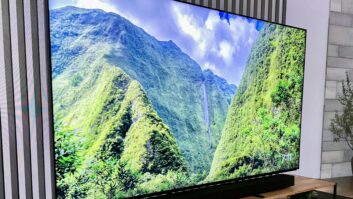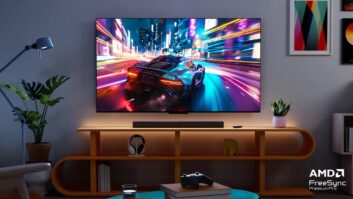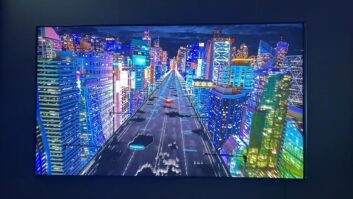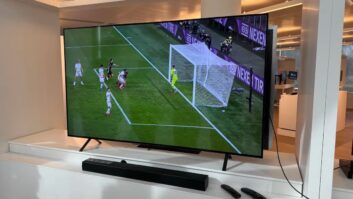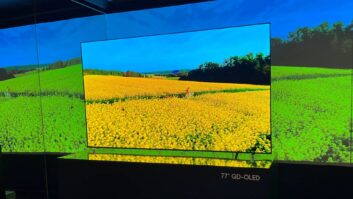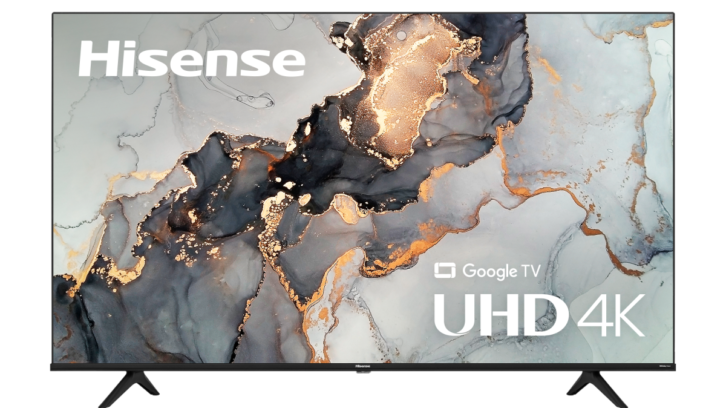
The picture quality benefits of the best OLED TVs are widely known and rightly lauded – if you want images with perfect blacks and detailed shadows, OLED has long been a go-to for discerning viewers.
But OLED sets have always been sold at a premium price, putting them out of reach for the majority of buyers who are simply looking for a good deal on decent quality TV. Part of the reason for this is that up until now the panels used to make OLED TVs have come from a single source: LG Display.
As the lone maker of OLED TV panels, LG Display supplies them to TV brands such as Sony, Panasonic, Philips, and Vizio. Meanwhile the company’s own consumer brand, LG Electronics, has been able to sell OLED sets at a comfortable profit margin since other makers aren’t in a position to undercut them on price.
That situation changed this year when Samsung entered the market. The company’s Samsung Display division is now making panels for OLED TVs, and Samsung Electronics has shipped its first QD-OLED sets in 55- and 65-inch screen sizes. Sony, too, has got in on the game and is now selling QD-OLED TVs with those same specs.
Not surprisingly, the new competition from Samsung Display has been good for OLED prices: premium OLED models from both Samsung and LG dropped as much as 20% only a few months after introduction, an unprecedented dip for the technology. At the same time, 48-inch OLED TVs have recently sunk below $1,000 in some cases for 2021 models.
mini-LED makes its move
As OLED has finally started a slow creep toward affordability, mini-LED technology is starting to show up in more lower-cost brands.
Mini-LED backlights were first made popular in TVs by TCL, with Samsung, LG, Sony, and Philips soon following suit. A main mini-LED TV benefit is black level: when combined with a process called local dimming wherein clusters of tiny LEDs in the set’s backlight are individually addressed to modulate brightness, the end result can look strikingly OLED-like.
Another benefit is light output: mini-LED TVs tend to be brighter than their regular LED TV counterparts, and they also exceed OLED models on that parameter.
While mini-LED TVs from the big brands are generally priced lower than OLEDs, the arrival of Hisense’s 2022 models means it now joins TCL in offering mini-LED sets at true budget prices. The company’s new U8H series is the first from the company to feature mini-LED backlights, and it will come in three screen sizes: 55, 65, and 75 inches, with 500+ local dimming zones on the latter two models.
Cost? The 65-inch U8H lists for $1,399, but is expected to sell for between $950 and $1,000. And Hisense’s 75-inch U8H is expected to sell for under $1,500. Compare those prices with TCL’s 6-Series R635 mini-LED TVs, which sell for roughly the same amount.
Beyond mini-LED tech, the U8H series offers HDMI 2.1 connections with 4K 120Hz, Variable Refresh Rate (VRR), Auto Low Latency Mode (ALLM), and Freesync Premium support. It also features Quantum Dots for enhanced color, is spec’d for 1,500 nits peak brightness, and has Dolby Vision IQ and Filmmaker modes.
When I recently spoke with David Gold, President of Hisense USA, he said that mini-LED tech will be trickling down the line to even cheaper models in 2023. That’s because the company plans to deliver “more tech features to consumers at lower prices” in an effort to build the Hisense brand.
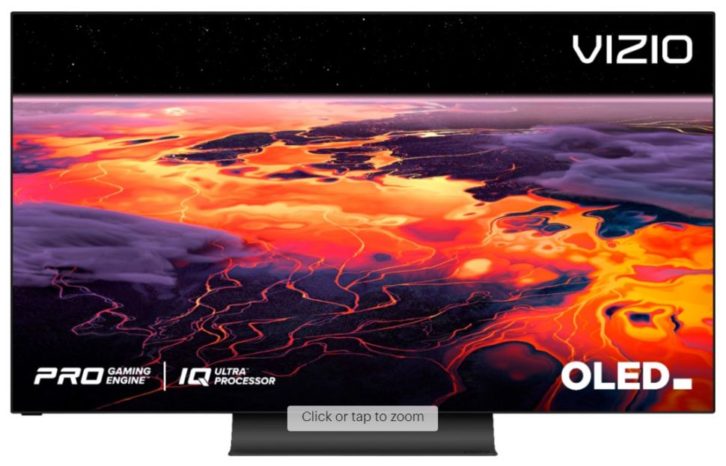
Why no budget OLED?
While Hisense’s current focus is on mini-LED and QLED (they instead use the term ULED for TVs with Quantum Dots), Gold said that the company would also like to get into the OLED market in the US and Europe.
However, pricing levels for OLED panels remain prohibitively high according to Gold, and that’s even with the recent addition of Samsung Display to the supplier mix. The current situation simply doesn’t work for a budget brand, one that’s focused on establishing market credentials while maintaining pricing aggressive enough to sway buyers over.
Another budget TV brand, US-based Vizio, has sold OLED TVs and currently features 55- and 65-inch models in its lineup. But both are carryovers from 2021, and the company’s recent announcement of its 2023 lineup made no mention of new OLED models.
mini-LED: the OLED alternative?
Even with new competition coming to LG Display, OLED prices remain high compared with other TV technologies. LG’s current 65-inch C2 OLED sells for around $2,300, while Samsung’s new 65-inch S95B QD-OLED is $2,600. As for Sony, prices for its 2022 models range between $2,000 for the A80K in a 65-inch screen size, and $4,000 for the A95K QD-OLED.
Compare that to the $950-$1,000 Hisense expects to sell its 65-inch U8H mini-LED ULED TV for. When we recently went hands-on with Samsung’s own mini-LED-backlit QN90B Neo QLED TV, one thing that made it stand out was an ability to display deep blacks and detailed shadows – kind of like an OLED TV.
With new mini-LED TVs priced at half the amount as same-size new OLED models, it’s pretty clear that OLED is losing the TV price war, even with the recent price drops for the technology.
The situation comes down to this: inflation is a real issue, and people don’t have as much money to spend on items like the best 4K TVs as they previously did. Possibly more competition from new panel suppliers could improve the situation for OLED, but in the meantime, mini-LED TVs are becoming available at significantly cheaper prices, and they’re looking quite good.
This article originally appeared on techradar.com.
About the Author
Al Griffin has been writing about and reviewing A/V tech since the days LaserDiscs roamed the earth, and was previously the editor of Sound & Vision magazine. When not reviewing the latest and greatest gear or watching movies at home, he can usually be found out and about on a bike.
See also: HDMI Splitter VS HDMI Switcher: What’s The Difference?





